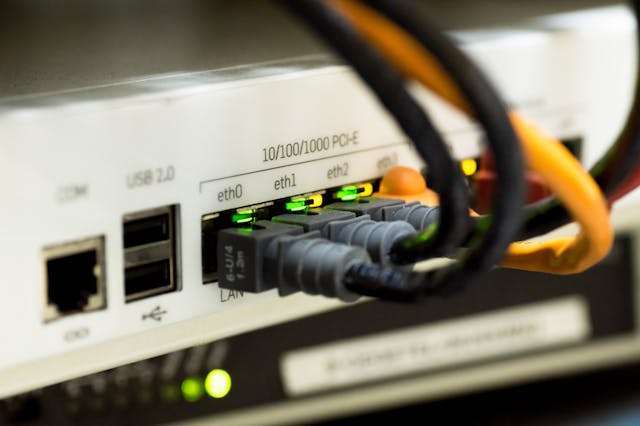Why Businesses Need to Understand the Basics of Networking
Businesses have become more reliant on technology and seamless data exchanges than ever before. Imagine a company with isolated departments being unable to collaborate or share files effectively. This is where a well-designed business network comes into play. It’s an essential ecosystem for connecting employees, clients, and partners, allowing for effective resource sharing and communication. Understanding the fundamentals of networking isn’t just reserved for IT professionals anymore.
What is Networking?
At the most basic level, networking is an intrinsically linked web of computers and devices that allows them to share resources and communicate. A network infrastructure includes physical elements like routers, cables, and switches, as well as software protocols that manage how data is sent and received.
When it comes to modern business operations, a split networking system serves as a crutch for online operations. If it weren’t for solid networking, businesses wouldn’t be able to share files, access applications, or communicate with others. Further, a solid network allows for the secure operation of all online services.
Benefits of Understanding Networking
Some businesses choose to outsource network management to IT professionals, which can save time and reduce expenses. However, it’s a good idea for all business stakeholders to have a basic understanding of the benefits of networking. The following sections explore these benefits, from improved problem-solving to communication and collaboration.
1. Improved Problem Solving
Networking is a delicate system with plenty of space for errors. By having a foundational understanding of networking, business leaders can employ troubleshooting techniques to solve minor problems and get back online. Doing this instead of relying on outsourced IT providers can reduce solution times and keep disruptions to a minimum.
2. Informed Decision Making
Businesses rely on data to make critical decisions, whether it’s which products to make next or how to market services. Understanding networking capabilities is just another way for businesses to garner control of data. For example, they can ensure they have the best hardware, software, and internet service provider (ISP).
3. Scalability and Growth
Modern businesses must have access to scalable options to avoid paying for infrastructure and services they don’t need. Having an introductory understanding of network infrastructures allows businesses to plan for future growth. This is because they can anticipate likely bottlenecks and proactively scale the capacity of the network to cope with them, whether it’s increased traffic or wireless connectivity issues.
4. Enhanced Security
Understanding common network vulnerabilities allows businesses to introduce necessary security measures. For example, integrating strong password policies into the workplace culture helps with access management. Additionally, firewalls and virus protection software help to keep undesirable software and network traffic from penetrating the business and accessing vulnerable data.
5. Communication and Collaboration
Strong communication is essential to any business because it facilitates customer interactions and employee collaboration. When employees have a basic understanding of networking, they can see how data flows, allowing them to troubleshoot issues and get back online. By having an entire workforce trained in foundational networking, downtime is less likely to be long-lasting.
Key Networking Components for Businesses
Now you understand why businesses need to understand basic networking, let’s take a look at what networking components should be learnt. This covers everything from network tools for troubleshooting to network security features.
Networking Tools
Several online and offline tools can help with network management and troubleshooting. They can provide valuable data and insights about how a network performs, highlighting issues to maintain healthy connections. For example, this Gcore DNS lookup tool can be used to verify Domain Name System (DNS) resolution, which breaks down web domain names into IP addresses. A properly functioning DNS is essential for smooth internet access.
IP Addresses
Every device connected to a network has a unique identifier called an IP address, which is essentially a digital mail-in address, allowing devices to locate and communicate with each other. There are two types of IP addresses that businesses should understand:
- Public IP address: These are unique addresses assigned to an internet connection by the ISP. They allow devices on the network to access the wider internet.
- Private IP address: These are used for internal networks. Private IPs aren’t routable on the public network and provide a layer of security for connected devices.
Network Types
Networking is a broad umbrella encompassing countless archetypes, but it’s important to choose the correct style to suit the needs of the business. Here are some of the most common network types:
- Local area network (LAN): These connect devices within a tight geographical location, usually a single office or campus.
- Wide area network (WAN): These keep dispersed locations connected, allowing businesses with multiple branches to share resources and collaborate without pain points.
- Virtual private network (VPN): These networks are almost like secure data tunnels, enabling remote users or branch locations to connect to a private network securely.
Network Security
Any online connection is susceptible to vulnerabilities caused by poor networking or cybercriminals, which is why businesses must implement solid network security protocols. The most common measures include strong passwords, firewalls, user access control, antivirus and anti-malware software. Additionally, staff training around safe internet usage will help to avoid phishing emails and other malicious online content.
Creating a Strong Network Foundation
Granting employees the power of basic networking knowledge is essential for creating a strong and secure foundation. Write clear documentation covering network usage, password management, and data security. Run regular training sessions to equip the workforce with essential troubleshooting skills.
Getting the network setup is the first stage, but ensuring longevity also has to be taken into account. The industry changes as businesses shift focus and technology evolves, which is why it’s important to keep up with relevant industry news and conduct regular audits, allowing
In the digital age, a well-functioning and maintained network infrastructure supports every business. By understanding fundamental networking concepts and taking proactive measures to remain online, businesses can ensure a secure and efficient digital environment for everyone. Not only does this safeguard and power employees, but it also shows potential customers that their sensitive data will be safe in your hands.



![Entrepreneurial Story of the Igwe Twins [Started as Office Cleaners]](https://thetotalentrepreneurs.com/wp-content/uploads/2016/09/Entrepreneurial-Story-of-the-Igwe-Twins-Started-as-Office-Cleaners-SpeedMeals-Mobile-Kitchen.png)

